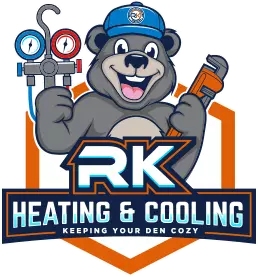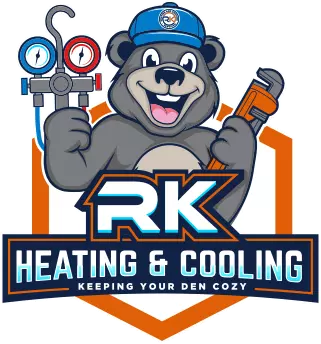It’s easy to overlook the small parts of our home systems, but keeping your HVAC filter clean and functional is important. This simple component ensures that your home’s air quality remains fresh and your heating and cooling system operates efficiently. Changing your HVAC filter regularly isn’t just a task; it’s part of maintaining a healthy and comfortable environment in your home in St. Louis.
An efficient HVAC system does more than just maintain the temperature within your home. It keeps allergens and dust at bay, providing a cleaner breathing space for you and your family. As seasons change, filters can clog with dust, pollen, and other debris. Regular changes help avoid these problems, ensuring your HVAC system does its job well.
Understanding Your HVAC Filter
An HVAC filter might seem like a simple piece of equipment, but it plays a crucial role in your home’s comfort. HVAC filters work by sifting out pollutants like dust and pollen from the air that circulates through your system. This keeps the air clean and helps your HVAC system run smoothly.
There are different types of HVAC filters available, with varying materials and efficiencies:
– Fiberglass Filters: These are the most basic and affordable, designed to block large dust particles.
– Pleated Filters: Made from polyester or cotton, these are denser and capture smaller particles.
– HEPA Filters: High-Efficiency Particulate Air filters are the most effective, trapping even the tiniest particles, although they might require professional installation.
Choosing the right filter type and keeping it clean ensures your HVAC system functions effectively, improves air quality, and reduces energy costs. Understanding your filter’s role helps you stay proactive about maintenance, ensuring your family breathes easy at home.
How to Check Your HVAC Filter
Regularly checking your HVAC filter is a straightforward task that can make a big difference. First, identify where your filter is located. Typically, filters are found in the return air duct or near the blower compartment. If you’re unsure, consult your HVAC system’s manual for guidance.
When examining the filter, look for dirt or dust buildup. Hold the filter up to the light; if you can’t see much light passing through, it’s time for a change. A clogged filter can restrict airflow, making your HVAC system work harder and less efficiently.
Signs of a dirty filter include increased dust around your home, reduced airflow from vents, and a lingering musty smell. By replacing a dirty filter, you can prevent potential HVAC issues and improve the air quality in your home.
Steps to Change Your HVAC Filter
Changing your HVAC filter is a simple process that requires only a few tools and minutes of your time. Before starting, gather a new filter of the correct size, which you can usually find on the side of your current filter. Also, keep a soft cloth handy for any dust cleanup.
Here’s a step-by-step guide for changing your filter:
– Turn off your HVAC system to ensure safety.
– Locate the filter compartment, usually covered by a metal grille.
– Remove the old filter, taking note of the direction of the airflow arrows.
– Clean any excess dust from the compartment with the soft cloth.
– Insert the new filter, ensuring the airflow arrows point toward the blower motor.
– Replace the grille and turn your HVAC system back on.
Always ensure you follow these steps to guarantee a proper fit and function. Doing so keeps your heating and cooling systems in optimal condition.
Keep Your HVAC System Efficient
To maintain your HVAC system’s efficiency, it’s recommended to replace the filter every one to three months, depending on usage and the presence of pets or allergies. Regular maintenance extends your system’s lifespan and ensures a comfortable, clean home environment.
Besides changing the filter, you can undertake simple maintenance steps, such as checking for drafts, ensuring vents are unblocked, and setting a comfortable thermostat temperature. These activities contribute to a smoother system operation and can help lower energy costs.
For more involved maintenance tasks, like deep cleaning or inspecting complex components, it is wise to call in our technicians. Their expertise ensures your HVAC system receives the care it needs to run smoothly through every season. Regular attention can prevent costly repairs and unexpected breakdowns, providing peace of mind and comfort in your St. Louis home.
Connect with Us for Expert HVAC Service
RK Heating & Cooling is committed to keeping your home comfortable, and regular HVAC maintenance plays a big part in that. If you notice your system struggling after a filter change or feel that routine upkeep is falling behind, consider learning more about HVAC service in St. Louis to get expert guidance on preserving optimal performance and air quality. For a quick estimate or to book a service visit, please contact us today.
RK Heating & Cooling is committed to keeping your home comfortable, and regular HVAC maintenance plays a big part in that. If you notice your system struggling after a filter change or feel that routine upkeep is falling behind, consider learning more about HVAC service in St. Louis to get expert guidance on preserving optimal performance and air quality. For a quick estimate or to book a service visit, please contact us today.




